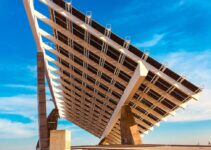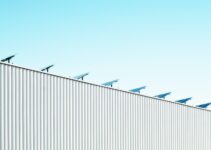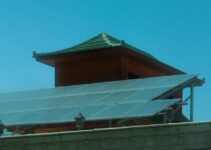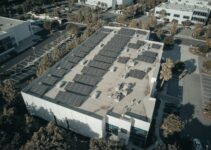When it comes to the durability of solar panels, one common concern is their ability to withstand hail. Hailstorms can bring about severe damage to various surfaces, so it’s natural to question the resilience of solar panels against hailstones. Understanding the impact of hailstones on solar panels is crucial in determining their durability and long-term performance.
It’s important to note that solar panels are designed to withstand various weather conditions, including hail. However, the level of hail resistance can vary depending on several factors such as the manufacturing process, design, and materials used in solar panel construction.
During a hailstorm, hailstones can range in size from small pellets to larger chunks of ice. The velocity at which these hailstones impact the solar panels can cause damage if the panels are not adequately designed and built to withstand such forces.
To assess the hail resistance of solar panels, manufacturers conduct rigorous testing procedures to ensure their products can withstand the impact of hailstones. These tests help determine the hail rating of solar panels and provide valuable insights into their durability.
The Importance of Hail Testing in Solar Panel Manufacturing
Hail testing plays a vital role in the manufacturing process of solar panels. It allows manufacturers to evaluate the durability and performance of their products under simulated hailstorm conditions. By subjecting solar panels to controlled hail testing, manufacturers can identify potential weaknesses and make necessary improvements to enhance their hail resistance.
During hail testing, solar panels are bombarded with ice balls of varying sizes and velocities. The panels are then inspected for any signs of damage, such as cracks, fractures, or loss of efficiency. This testing process helps manufacturers determine the hail rating of their solar panels, which is an essential factor for consumers to consider when purchasing solar systems.
By investing in solar panels that have undergone rigorous hail testing, consumers can have peace of mind knowing that their panels will withstand hailstorms and continue to generate clean energy even in harsh weather conditions.
Factors That Determine the Resilience of Solar Panels Against Hail
Several factors contribute to the resilience of solar panels against hail. Understanding these factors can help consumers make informed decisions when choosing solar panels for their homes or businesses:
- Panel Design: The design of solar panels plays a crucial role in their ability to withstand hailstones. Panels with robust frames and reinforced glass are more likely to withstand the impact of hail compared to panels with weaker structural integrity.
- Material Quality: The quality of materials used in solar panel construction is another important factor. High-quality tempered glass is often used in hail-resistant panels, as it is designed to withstand significant impact without shattering.
- Thickness: The thickness of the glass covering the solar cells also affects the panel’s resilience against hail. Thicker glass is generally more durable and can provide better protection against hailstones.
- Anti-Reflective Coating: Some solar panels feature an anti-reflective coating that not only improves their efficiency but also offers an additional layer of protection against hailstones.
Considering these factors can help consumers select solar panels that are better equipped to withstand hail and ensure long-term performance and durability.
How Solar Panel Design and Materials Play a Role in Hail Resistance
Solar panel design and materials are crucial in determining the level of hail resistance. Manufacturers employ various strategies to enhance the hail resistance of their panels:
- Frame Design: Solar panels with reinforced frames, such as aluminum or steel, provide better structural integrity and can better withstand the impact of hailstones.
- Tempered Glass: Many solar panels are constructed with tempered glass, which is designed to be more resistant to impact. Tempered glass undergoes a heating and cooling process that strengthens the glass and makes it less prone to shattering.
- Backsheet Material: The backsheet of a solar panel acts as a protective layer. Panels with a robust backsheet made from materials like ethylene-vinyl acetate (EVA) offer better protection against hail damage.
- Cell Interconnection: The way solar cells are interconnected within the panel can also impact their hail resistance. Panels with a strong and secure interconnection system are less likely to suffer damage from hailstones.
By focusing on design elements and selecting high-quality materials, manufacturers can improve the hail resistance of their solar panels, ensuring they can withstand the impact of hailstones and continue producing clean energy efficiently.
Mitigating Hail Damage: Best Practices for Solar Panel Maintenance
While solar panels are designed to withstand hail, it is still important to take proactive measures to mitigate potential damage and ensure their longevity. Here are some best practices for solar panel maintenance:
- Regular Inspections: Conduct regular visual inspections of your solar panels to identify any signs of damage, such as cracks or loose connections. Promptly address any issues to prevent further damage.
- Cleaning: Keep your solar panels clean to maintain their efficiency. Regularly remove dust, dirt, and debris that may accumulate on the surface. However, consult the manufacturer’s guidelines for cleaning recommendations to avoid causing damage.
- Trim Trees: If you have trees near your solar panels, ensure they are properly trimmed to minimize the risk of branches or falling debris causing damage during a hailstorm.
- Professional Maintenance: Consider hiring a professional solar panel maintenance service to perform routine inspections and maintenance tasks. They have the expertise to identify potential issues and ensure your solar panels are in optimal condition.
By following these best practices, you can help protect your solar panels from hail damage and maximize their lifespan, ensuring they continue to generate clean energy for years to come.
Real-Life Examples of Solar Panels Surviving Hailstorms
There have been numerous real-life examples that demonstrate the resilience of solar panels against hailstorms. These examples highlight the importance of investing in quality solar panels that can withstand extreme weather conditions:
In 2017, a severe hailstorm struck Denver, Colorado, causing extensive damage to properties. However, many solar panel installations in the area remained intact despite the large hailstones. This showcases the effectiveness of hail-resistant solar panels in withstanding extreme weather events.
Similarly, in 2019, a hailstorm swept through Dallas, Texas, damaging roofs, cars, and other structures. Despite the destructive nature of the storm, numerous solar panel systems in the region sustained minimal to no damage, further emphasizing the durability of well-built solar panels.
These real-life examples serve as a testament to the resilience of solar panels against hailstorms. Investing in high-quality, hail-resistant solar panels can provide homeowners and businesses with peace of mind knowing their solar systems can withstand severe weather conditions.
Frequently Asked Questions
Q: Can solar panels withstand large hailstones?
A: Yes, solar panels are designed to withstand large hailstones. However, the level of hail resistance can vary depending on factors such as panel design, materials used, and manufacturing processes. It is important to choose hail-resistant solar panels to ensure their durability.
Q: How are solar panels tested for hail resistance?
A: Solar panels undergo rigorous hail testing to assess their durability. During these tests, panels are subjected to simulated hailstorm conditions, where they are bombarded with ice balls of varying sizes and velocities. The panels are then inspected for any signs of damage to determine their hail rating.
Q: Are there any maintenance practices to protect solar panels from hail damage?
A: While solar panels are built to withstand hail, certain maintenance practices can help mitigate potential damage. Regular inspections, keeping panels clean, trimming trees near the panels, and professional maintenance can all contribute to protecting solar panels from hail damage.
Expert Advice on Can Solar Panels Withstand Hail?
Experts recommend investing in high-quality solar panels that have undergone rigorous hail testing. It is crucial to consider factors such as panel design, materials used, and hail resistance ratings when selecting solar panels. Regular maintenance and prompt repairs are also essential to protect solar panels from hail damage and ensure their long-term performance.






